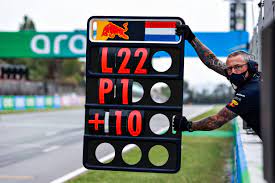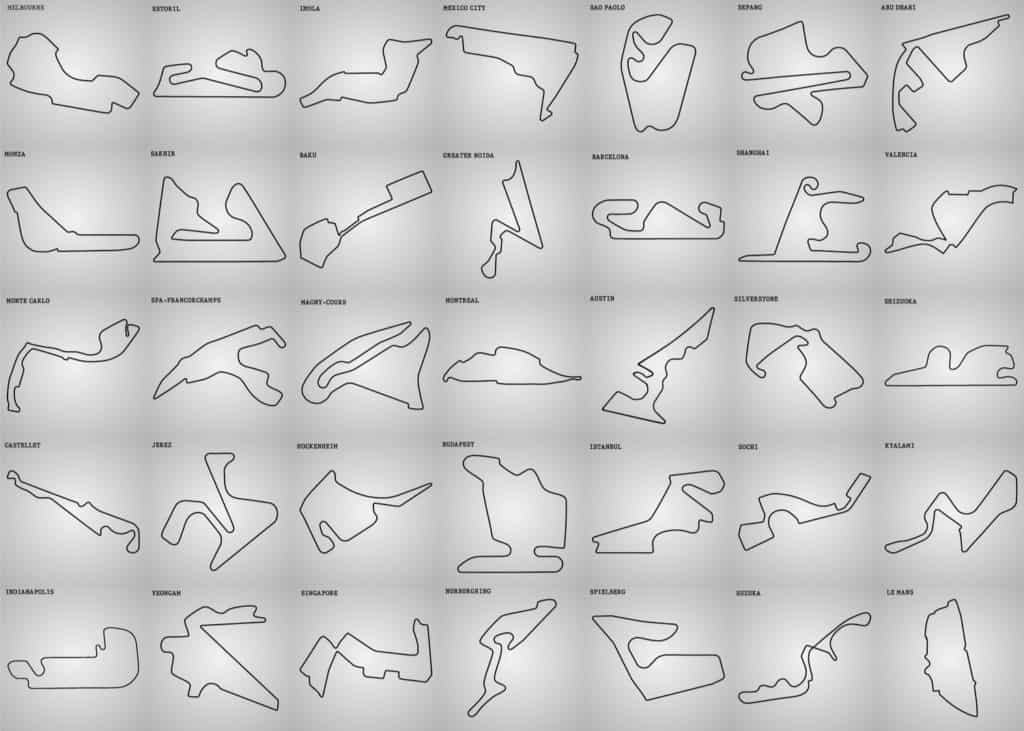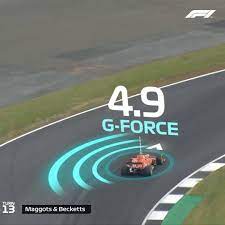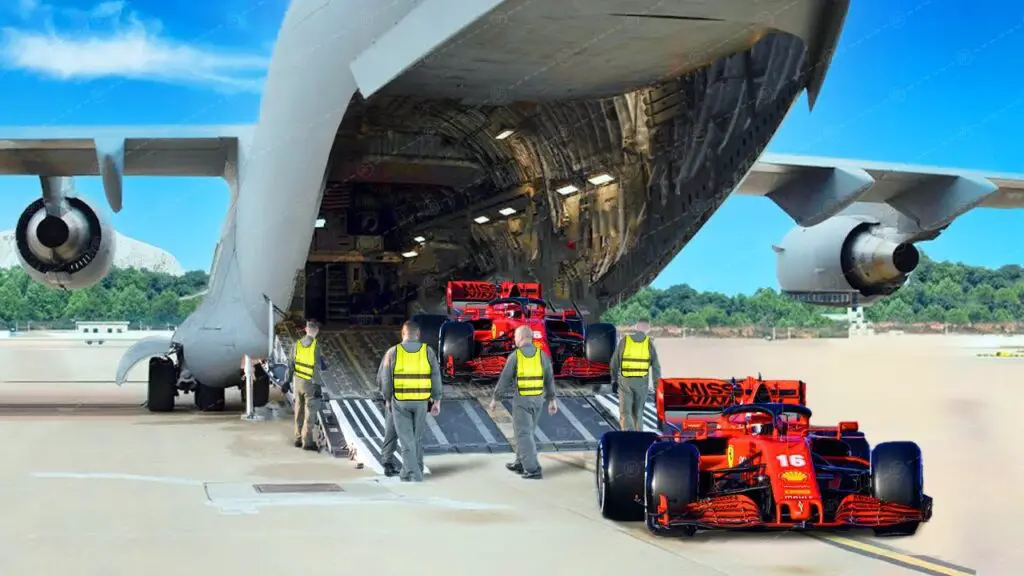Welcome to the exciting world of Formula One racing! Whether you’re a die-hard fan or a newcomer to the sport, one thing that can be a bit confusing is the distance of an F1 race. Unlike other forms of motorsport, F1 races are not measured in laps or miles, but in F1 Race Time and kilometers. But what does that really mean?
Unlike other motorsports, F1 races are not based on a fixed number of laps or a fixed distance. Instead, they are determined by a maximum time limit of two hours and a minimum distance of 305 kilometers (189.5 miles).
Why is it measured in kilometers? In this ultimate guide, we’ll break down everything you need to know about the distance of an F1 race. From the history of the sport to the current rules and regulations, we’ll give you a comprehensive understanding of how the distance is calculated, why it matters, and what to expect from a typical race.
Whether you’re planning to attend a live event or simply want to impress your friends with your F1 knowledge, this guide has got you covered. So buckle up and get ready to learn all about the distance of an F1 race!
How Long Is an F1 Race – F1 Race Distance Regulations
The FIA sets regulations for the distance of F1 races. They are designed to ensure fairness and safety for all drivers. One of the most important regulations is the minimum and maximum length of circuits. This ensures that races are not too short or too long.
The FIA also sets a maximum time limit for races, which is usually around 2 hours. The FIA stops a race when it doesn’t complet within this time limit. The declare the results based on the positions at the time of the stoppage.
“The distance of all races shall equal the least number of complete laps which exceed 305km.”
FIA regulations
“The distance for the Monaco Grand Prix is the lowest number of complete laps which exceed a distance of 260km.”
The minimum distance the F1 cars travel during the main race is 190 miles (305km). The officials amend this on street circuits such as Monaco.
Because the race is run at such a slow relative speed, the Monaco circuit is reduced to approximately 161 miles (260km). The time restrictions would be exceeded if the organizers did not reduce the distance.
How Long Is an F1 Race – Distance of an F1 Race
The distance of an F1 race is important for several reasons. Firstly, it determines the total time that drivers have to complete the race. Secondly, it affects the strategy that teams use during the race.
For example, if the race is shorter, teams may choose to use a more aggressive strategy, while longer races may require a more conservative approach. Finally, the distance of an F1 race can also impact the physical and mental endurance that drivers need to complete the race.
How Long Is an F1 Race – Historical Overview

The distance of F1 races has evolved over time, with changes in technology, safety, and regulations.
In the early days of the sport, races were much shorter, with the first F1 race in 1950 being just 80 km in length. However, as technology improved, cars became faster and more reliable, and races started to get longer.
Throughout the 1960s and 1970s, F1 races typically ranged from 200-400 km in length, with the exception of a few longer endurance races.
How Long Is an F1 Race – the Different Types of F1 Race Formats
There are two different types of F1 race formats, each with its own unique distance and rules.
The Grand Prix
The most common type of F1 race is the Grand Prix, which is a single race that takes place over a weekend. Grand Prix races are typically between 300-400 km in length and consist of around 50-70 laps.
How Long Is an F1 Race?
The FIA regulations stipulate that the maximum period of normal races, with no suspensions, is 2 hours.
If the race is suspended due to bad weather or incidents on the track, the race can be extended for an additional 1 hour more – 3 hours in total.
Factors affecting how long a Formula 1 Race include.
- Accidents
- Penalties
- Bad weather
- Infringements
- Or any other situation that affects the running of the event.
The FIA Formula 1 Regulations (Section 5.4)
“The distance of all races is the lowest number of laps which exceed a distance of 305km. The FIA makes exceptions in the following circumstances.
- The distance of the race in Monaco shall be equal to the least number of complete laps which exceed a distance of 260km.
- An event (weather, accidents) suspends the race.
Official add the suspension time to the original two-hour limit.
This is subject to a total time of 3 hours (2 normal plus 1 extension.)
How Long Is an F1 Race – How Many Laps in F1?

The length of each circuit determines how many laps there are in the F1 race and therefore how long is a Formula 1 race.
The shorter the circuit, the more laps there are in each race.
Short circuits entertain spectators more because the cars pass in front of them more often.
How Are The Drivers Notified That The 2-Hour Limit Applies?
Marshals flag the “end-of-race signal” to the leading driver after 2 hours. The leading driver crossing the line on that lap finishes the race.
Drivers score the race positions in the same order they cross the line.
How Long Is an F1 Race – The Sprint Race
Another type of F1 race is the sprint race, which is a shorter race that takes place before the main Grand Prix race. Sprint races are typically around 100 km in length and consist of around 20-30 laps.
How Long Is an F1 Race – Circuit Length
The length of the circuit has a significant impact on the distance of an F1 race. Longer circuits require fewer laps to complete a race, while shorter circuits require more laps. This means that the distance of an F1 race can vary significantly depending on the circuit.
For example, the Monaco Grand Prix is one of the shortest races on the calendar, with a total distance of just 260 km, while the Belgian Grand Prix (Circuit de Spa) is one of the longest, with a total distance of 308 km.

How Long Is an F1 Race – How do the Circuits Compare?
The longest circuit on the schedule is at Circuit de Spa-Francorchamps in Belgium (circuit length 4 miles – 7km). On this circuit, there are only 44 laps.
| Date | Venue | Laps | Circuit | Distance |
|---|---|---|---|---|
| 23/2 | Sakhir | n/a | n/a | n/a |
| 5/3 | Sakhir | 57 | 3.4 miles | 191miles (308 km) |
| 19/3 | Jeddah | 50 | 3.83 miles | 191 miles (308 km) |
| 2/4 | Melbourne | 58 | 3.3 miles | 191 miles (307 km) |
| 30/4 | Baku | 51 | 3.7 miles | 190 miles (306 km) |
| 7/4 | Miami | 57 | 3.4 miles | 191 miles (308 km) |
| 21/5 | Imola | 63 | 3.1 miles | 192 miles (309 km) |
| 28/5 | Circuit de Monaco | 78 | 2.1 miles | 161 miles (260 km) |
| 4/6 | Barcelona | 66 | 2.9 miles | 190 miles (307 km) |
| 18/6 | Gilles Villeneuve | 70 | 2.7 miles | 189 miles (305 km) |
| 2/7 | Red Bull Ring | 71 | 2.7 miles | 190 miles (306 km) |
| 9/7 | Silverstone | 52 | 3.7 miles | 190 miles (306 km) |
| 23/7 | Budapest | 70 | 2.7 miles | 190 miles (306 km) |
| 30/7 | Circuit de Spa | 44 | 4.4 miles | 191 miles (308 km) |
| 27/8 | Zandvoort | 72 | 2.6 miles | 190 miles (306 km) |
| 3/9 | Monza | 53 | 3.6 miles | 190 miles (306 km) |
| 17/9 | Marina Bay | 61 | 3.1 miles | 191 miles (308 km) |
| 24/9 | Suzuka | 53 | 3.6 miles | 191 miles (308 km) |
| 8/10 | Lusail | 57 | 3.4 miles | 191 miles (308 km) |
| 22/10 | Circuit Of The Americas | 56 | 3.5 miles | 191 miles (308 km) |
| 29/10 | Herman Rodrigues | 71 | 2.7 miles | 189 miles (305 km) |
| 5/11 | Sao Paulo | 71 | 2.7 miles | 189 miles (305 km) |
| 18/11 | Hard Rock | 57 | 3.4 miles | 191 miles (308 km) |
| 26/11 | Yas Marina | 55 | 3.4 miles | 189 miles (305 km) |
How Long Is an F1 Race – Why Are F1 Races So Short?
There are several reasons why F1 races are shorter than events in other race disciplines.
The F1 Drivers And Teams Routine Is Punishing
The life of an F1 driver is anything but easy.
They must remain in peak physical condition for 25 race weekends (1 testing X 24 races).
On weekends with the normal qualifying format, drivers must be available for press, briefings, drivers, and team meetings.
On Friday, there are two practice sessions ( P1 and P2) where the driver has to operate as a test pilot. They must monitor what the car is doing and communicate this accurately to the race engineers.
On Saturday, they have a third practice session (P3) and three qualifying sessions (Q1, Q2, and Q3.)
These very high-intensity sessions ultimately decide the grid for the main event on Sunday.
If the car is in an accident, the teams may need to work overnight to have it repaired and race-ready for the Sunday event.
The drivers and teams travel to the next event, which involves traveling through time zones and the related changes to their body clocks.
The FIA tightly controls the intense schedule. By making sure the races run so that they are long enough for the spectators and yet do not exhaust the drivers and teams.
The Forces Imposed On The Drivers Are Extreme
The forces imposed on the driver’s body are extreme for races that are run over the course of anything between 44 and 78 laps.
Imagine traveling down a straight at 250 km/h and having to brake the car down to a speed of 80 km/h to negotiate a corner which may include a sharp right and sharp left turn.
At the corner’s apex, the driver accelerates back up to the maximum speed for that section, only to do it all over again at the next corner.
While the driver is coping with these massive horizontal and lateral negative and positive G forces, they may be racing side by side (sometimes inches away from each other), possibly with more than one car involved in the melee.

The physical exertion imposed on an F1 driver during a Grand Prix race results in the driver losing up to 8.8 pounds (4kg ) during a race.
The physical and mental stresses imposed on the driver’s body are extreme.
Officials reduce these stresses by limiting the length and duration of the races.
The F1 Race Cars Logistics Require Shorter Races

The very strict weight limitations imply the amount of fuel used is restricted.
As the teams are not permitted to refuel during the race, the result is that it is only sufficient to run the car for the designated distances.
How Long Is an F1 Race – TV Rights Play a Large Role
Live TV beamed around the world is one of F1’s largest revenue earners is from
With that come restrictive time frames for the race events.
How Long Is an F1 Race – Which Is the Shortest F1 Race?
The Monaco street circuit is the shortest race. With the 2023 cancellation of the Chinese Grand Pix in Shanghai, the shortest conventional F1 race is The Canadian Grand Prix. It runs at Montreal Gilles Villeneuve (189 miles – 305 km
| Category | Track | Distance | Circuit Length | Lap |
|---|---|---|---|---|
| Shortest Distance Monaco | Monaco | 161 m (260 km) | 2.07 m (3.3 km) | 78 |
| Smallest number of laps Conventional Track | Montreal | 189 m (305 km) | 2.7 m (4.4 km) | 70 |
| Shortest No of laps | Spa | 191 m (308 km) | 4.35 m (7.0 km) | 44 |
| Shortest circuit length | Monaco | 161 m (260 km) | 2.07 m (3.3 km) | 78 |
| Shortest lap conventional track | Red Bull Ring | 190 m (306 km) | 2.64 m (4.3 km) | 72 |
The fastest F1 race ever was the 2003 Italian Grand Prix, which lasted only 1 hour, 14 minutes and 19 seconds.
How Long Is an F1 Race – Longest F1 Race Distance

The Sochi Autodrom in Russia was the longest F1 race distance in 2022. The overall racing distance is 309.7 kilometers (192.5 miles). Drivers complete 53 laps around the 5.848 kilometers (3.663 miles) long track. The FIA cancelled it due to sanctions placed on Russia.
It is not the longest F1 race distance. The record belongs to the 1951 French Grand Prix run over a distance of 601.8km (373.8 miles). This was the first of three races won by two drivers sharing a single car. Luigi Fagioli and Juan Manuel Fangio collectively raced 77 laps of the Reims-Gueux circuit to win for Alfa Romeo2.
The longest track on the 2023 F1 calendar is the Belgian Grand Prix at the Circuit de Spa-Francorchamps. It’s 7.004 kilometers (4.352 miles) long, with only 44 laps driven around the circuit. With some of the sport’s most famous corners, such as Eau Rogue, this circuit is one of the fans’ and drivers’ favorites.
How to Calculate the Distance of an F1 Race
To calculate the distance of an F1 race, you need to know the length of the circuit and the number of laps.
To calculate the total distance of the race multiply the length of the circuit by the number of laps. For example, if a circuit is 5 km long and the race is 60 laps, the total distance of the race would be 300 km.
Conclusion
Under normal circumstances, the F1 race will never last longer than 2 hours. Apart from the special exception of Monaco, the length of an F1 race will not be less than 190 miles (305km.)
Because of the lack of overtaking at Monaco, from a spectator’s perspective, it is somewhat like watching paint dry. Thankfully it is the shortest circuit on the calendar.


Your point of view caught my eye and was very interesting. Thanks. I have a question for you.
I don’t think the title of your article matches the content lol. Just kidding, mainly because I had some doubts after reading the article.
Can you be more specific about the content of your article? After reading it, I still have some doubts. Hope you can help me.
Thank you for your sharing. I am worried that I lack creative ideas. It is your article that makes me full of hope. Thank you. But, I have a question, can you help me?
Your article helped me a lot, is there any more related content? Thanks!
The point of view of your article has taught me a lot, and I already know how to improve the paper on gate.oi, thank you.
Reading your article has greatly helped me, and I agree with you. But I still have some questions. Can you help me? I will pay attention to your answer. thank you.
I have read your article carefully and I agree with you very much. This has provided a great help for my thesis writing, and I will seriously improve it. However, I don’t know much about a certain place. Can you help me?
Very nice post. I just stumbled upon your blog and wanted to say that I’ve really enjoyed browsing your blog posts. In any case I’ll be subscribing to your feed and I hope you write again soon!
I agree with your point of view, your article has given me a lot of help and benefited me a lot. Thanks. Hope you continue to write such excellent articles.
test